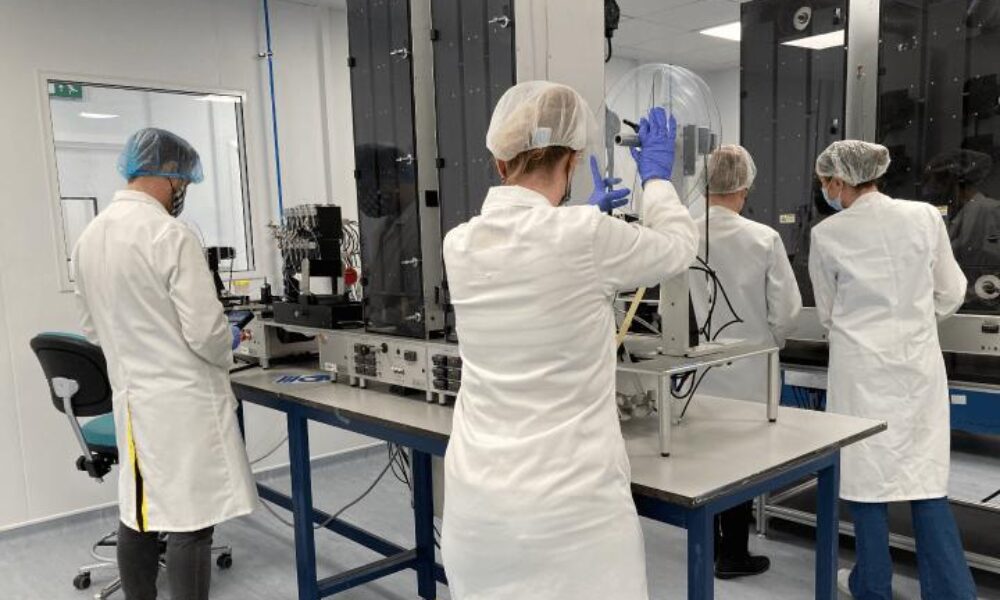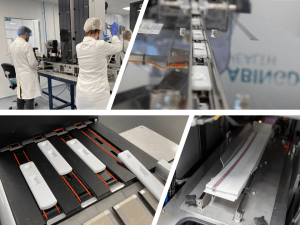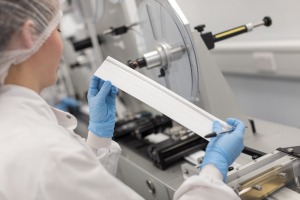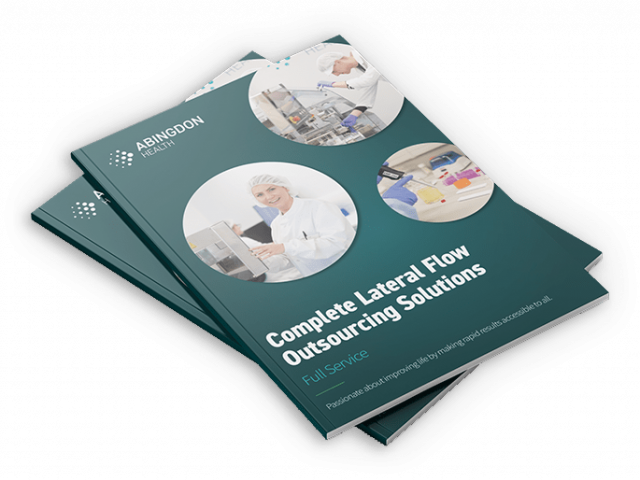Robustness Studies: An Essential Element of LFT Technical Transfer & Scale-Up

What Are Robustness Studies and How Do We Test Them?
Know the Capabilities and Limitations
Manufacturing Equipment and Processes Focused on Achieving Assay Performance
Reagents and Component Stability: Don’t Lose Focus
Key Take-Away
Technical transfer and scale-up is a critical part of taking an LFT (lateral flow test) from R&D into reliable routine manufacture. We recently discussed this topic in our blog about overcoming common technical transfer and scale-up issues’. However, in this article our Product Development Manager, Jon Flint, deep dives into the transfer process, calling on his 20+ years of experience, to discuss the implementation of effective ‘robustness studies’; a key factor in ensuring the reliable and robust production of an LFT.
What Are Robustness Studies and How Do We Test Them?
The robustness of an LFT may be defined as capacity for that assay’s performance to remain unaffected by small, but deliberate variations in method parameters. One critical element of technical transfer is to undertake work programmes to vary parameters and in effect understand the limitations of an assay.
Understanding the potential failure points is one aspect of robustness. It may seem counterintuitive to focus on where things go can wrong, but this is exactly what is required. To a significant extent this stems from experience and knowledge but also from using appropriate tools for analysis. Abingdon Health utilise process FMEAs, Failure Mode Event Analysis, an established instrument for identifying potential failures and the critical points of control to ensure reproducibility.
The FMEA is a process risk analysis template where we generate a Risk Priority Number (RPN) and assign scores based on three elements:
-
Severity of impact
-
Likelihood of occurrence
-
Ease of detection
We evaluate all the different lateral flow manufacturing processes, whether that is striping a membrane, laminating cards, or measuring buffer volumes, for example. We then classify them on a scale from negligible to catastrophic. The RPN rating will determine priority actions to mitigate process risks.
Know the Capabilities and Limitations
 Our understanding of the robustness of an LFT is built on knowledge; specifically, the capabilities and limitations of the equipment and processes involved; and secondly, the reagents and components used throughout manufacture. The successful transfer of a product comes from the R&D invested to generate a well characterised test specification, and importantly the repeatability and robustness of the manufacturing processes.
Our understanding of the robustness of an LFT is built on knowledge; specifically, the capabilities and limitations of the equipment and processes involved; and secondly, the reagents and components used throughout manufacture. The successful transfer of a product comes from the R&D invested to generate a well characterised test specification, and importantly the repeatability and robustness of the manufacturing processes.
At the outset, several activities are employed which will identify and assess Critical Process Parameters (CPPs), namely those process inputs that have a direct and major influence on the performance of the assay. The performance attributes that are considered critical for the product quality are known as Critical Quality Attributes (CQAs).
Activities are employed throughout scale-up to push the limitations of the defined CPPs and CQAs with new process parameters identified and implemented where required. These activities are what we define as the ‘robustness studies’.
Manufacturing Equipment and Processes Focused on Achieving Assay Performance
Process robustness activities should start as early as possible in the development phase and continuing throughout the life of the product. However, transition through scale-up to final batch size is often where processes are challenged most. Experience shows that to establish the required robustness some design parameters may require adjustment from those originally identified during development. This is where experience and knowledge of materials and your equipment pays dividends.
Having that robustness leads to having manufacturing processes that tolerate the expected variability of raw materials, operating conditions, process equipment and environmental conditions as well as human factors. Furthermore, understanding your process robustness gives the confidence and certainty of product performance, yield and efficiency.
Examples of formal robustness studies under validation planning and reporting include:
- Processing materials at temperature ranges
- Mimicking stoppages in the membrane or pad dispense steps
- Performing dispensing over elongated time ranges to test the stability of reagents, concentration ranges (antibodies) or particles densities/ODs (conjugated particles)
Reagents and Component Stability: Don’t Lose Focus
 Appraisal of the critical materials such as lot-to-lot variability, stability for the duration of a manufacturing processes, time spent on the bench top or resilience to operating conditions are some of the factors that drive the experimental design for robustness studies.
Appraisal of the critical materials such as lot-to-lot variability, stability for the duration of a manufacturing processes, time spent on the bench top or resilience to operating conditions are some of the factors that drive the experimental design for robustness studies.
This also extends to elements such as Quality Control (QC) panel, knowing how stable this is and its shelf life and storage conditions such that enables continuity and ease of QC.
It is also important to consider the technical specifications of the materials and the capabilities of the supplier(s), for example material slit width tolerances, roll formatting, tensile strength, and compatibility with the manufacturing equipment.
We use this information to define:
- Incoming qualification specifications (for example in terms of material dimensions or thicknesses etc, or minimum stock concentrations)
- The processes parameter, e.g. maximum permissible run time, batch size or whether there’s a need to implement additional controls to maintain the temperature of materials or other handling considerations
From the FMEA we also identify control points such as in-process concentration checks, especially for antibodies and for checking the OD/particle density of our conjugated particles. For example, using spectrophotometer, and output of robustness studies would help set permissible tolerances on these concentrations.
Key Take-Away
Ultimately LFT robustness comes down to knowing your processes and materials and understanding how to challenge the limitations of these. Once this is understood it is possible to implement the correct controls throughout manufacture. From supplier management and initial material receipt, through to storage and in-process checks a robust set of manufacturing procedures and processes will be generated from these studies which should ensure that assay manufacturing is robust now and the future.
Decades of experience in taking tests from concept to commercialisation has led to Abingdon Health establishing effective robustness studies that can adapt to the various technical transfer and scale-up challenges. Speak with our team to see how we can help take your test from R&D into reliable manufacture. Also, discuss our value-added services such as regulatory and commercial support that provides a de-risked and streamlined route to market.

